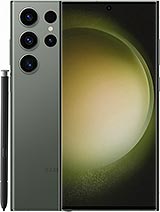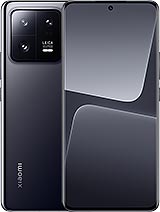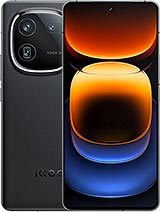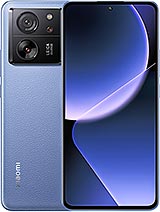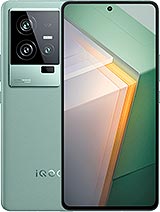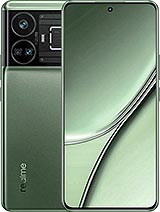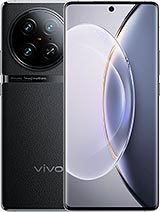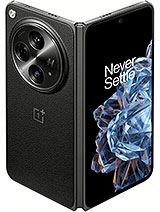iQOO 12 review

A 6.78-inch LTPO AMOLED screen
The iQOO 12 features an upgraded display over the iQOO 11 - a 6.78-inch LTPO AMOLED panel, most likely Visionox 8T.

The screen has 1,260 x 2,800 pixels (453ppi), supports dynamic refresh rate up to 144Hz and 2,160Hz pulse-width modulation for flicker-free dimming. It is also HDR10+ certified and has a rated high maximum brightness of 1,400 nits and a peak of 3,000 nits.
The panel also offers 10-bit color depth and can show over 1 billion colors. It fully covers the DCI-P3 color space.
We've completed our display test, and the numbers are in line with iQOO's claims. We captured 502nits of maximum brightness when controlling the brightness slider manually. When using the Auto Brightness mode though, the screen can be much brighter - over 1,400 nits, to be specific.
The minimum brightness at point white was just 1.9 nit, which is excellent.
Color accuracy
The iQOO 12 display supports DCI-P3 wide color space. The display color options offer three different color models - Standard (default, DCI-P3), Bright (DCI-P3 with saturation boost), and Pro color (sRGB). You can fine-tune the color temperature for each mode.
The Standard (default) option reproduces DCI-P3 faithfully, and we found it fairly accurate, excluding the slightly bluish-white and gray hues.
The Pro option corresponds to sRGB and offers incredibly accurate rendering, including white and gray colors.
Refresh rate
The display supports up to 144Hz refresh rate, and there are three refresh modes, all adaptive - High (up to 144Hz), Standard (up to 60Hz), and Smart Switch (automatically limits some apps to 60Hz or 90Hz).

The adaptive refresh rate works as expected - it drops down to 1Hz when the screen shows static content and goes all the way up to 144Hz for games and benchmarks unless you've chosen Standard, then the ceiling is 60Hz.
For streaming apps and video players Smart Switch uses 90Hz, while High uses 120Hz. Other than that, the refresh rate changes depending on the video - 30Hz for 30fps, 60Hz for 60fps, we saw 50Hz, 70Hz, so it is as dynamic as suggested.
The Always-on Display uses 1Hz, as expected.
While we never saw 144Hz across the UI and system apps, we can confirm the screen uses 144Hz across various games and benchmarks, whether in High or Smart Switch modes.
HDR and streaming
The iQOO 12 comes with Widevine L1 DRM support, and Full HD streaming with HDR10 support is available across popular platforms, Netflix included.
Visual enhancements
The Display options menu offers some visual enhancements - Visual Enhancement, MEMC, and Super Resolution. The first one is like SDR to HDR - it optimizes the colors and contrast in video apps like Netflix, Video, YouTube (you can pick the apps manually from the compatible list). It does offer a minor boost in color saturation and contrast, but it will probably reduce your battery consumption.
There is also MEMC and Super Resolution option for smoother and cleaner visual effects, though it may also impact the intended cinematic experience as well as the battery life.






Display options and enhancements
Battery life
The iQOO 12 is powered by a large 5,000 mAh battery. It is a graphite-enhanced battery that's supposed to retain at least 80% of its capacity after 1,600 cycles.
The iQOO 12 Active User Score is quite alright at 13:30 hours, and it is similar to what the Galaxy S23 Ultra offers. The individual scores are excellent - the iQOO 12 lasted over a day on voice calls, over 11 hours on web browsing, almost 18 hours on video streaming, and 8.5 hours of gaming.
The web browsing could have been better, but it is still plenty enough.
Charging speed
The iQOO 12 supports 120W FlashCharge and it ships with the 120W and the 6A-rated USB-C cable.

There are two battery options - Fast Charging (on/off) and Optimized battery life (learns your charging habits).
The charging time is indeed super fast! We got 30% in just 5 minutes. Then we clocked 69% of the charge in 15 minutes! A full charge took 26 minutes!
There is no wireless charging available on the iQOO 12.
Speakers
The iQOO 12 has a traditional hybrid stereo speaker setup of the latest variety. It has the two pieces placed on its top and bottom sides behind dedicated grilles. The top speaker also acts as an earpiece, and that's why it has another front-facing grille. Basically, sound is coming from three places and since the top one is quieter, the front outlet balances this out.

The stereo speakers on the iQOO 12 scored a Very Good mark on our loudness test, and they indeed sound loud. The audio quality is good, but not great - the vocals are alright, and the high range is okay, but the bass is minimal, and the audio sounds a bit shallow.
Use the Playback controls to listen to the phone sample recordings (best use headphones). We measure the average loudness of the speakers in LUFS. A lower absolute value means a louder sound. A look at the frequency response chart will tell you how far off the ideal "0db" flat line is the reproduction of the bass, treble, and mid frequencies. You can add more phones to compare how they differ. The scores and ratings are not comparable with our older loudspeaker test. Learn more about how we test here.
Reader comments
- Abhay
- 21 Mar 2025
- rK8
Hey, I am confused between iqoo 12 and oneplus 13r, which is better overall? Which has better camera? Please help.
- Anonymous
- 03 Mar 2025
- 7k3
Try to get the latest one if possible since the price is comparatively same
- Zen Moon
- 28 Nov 2024
- tsP
Incorrect. My iqoo12 always fully charges the battery for 35 minutes

